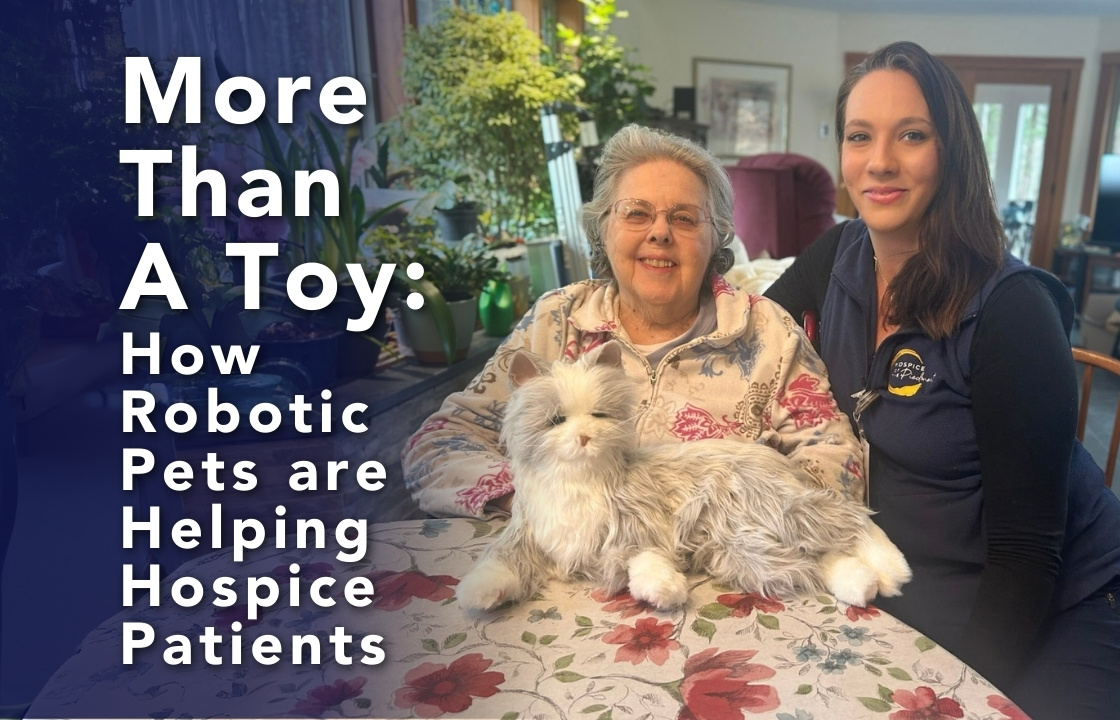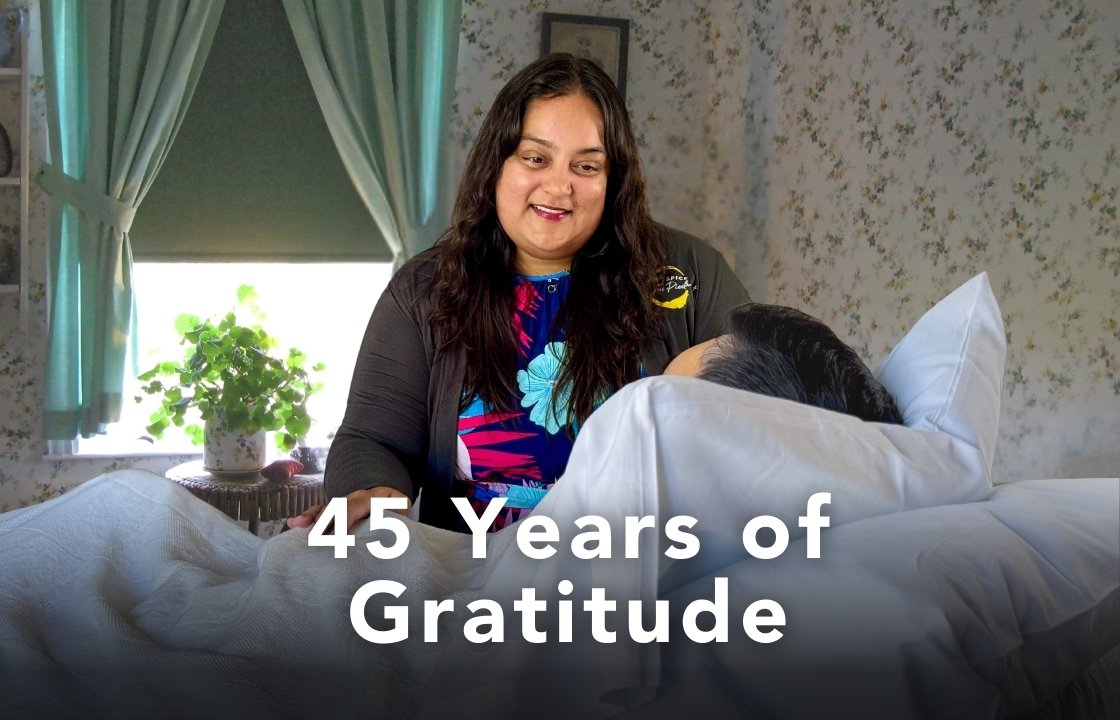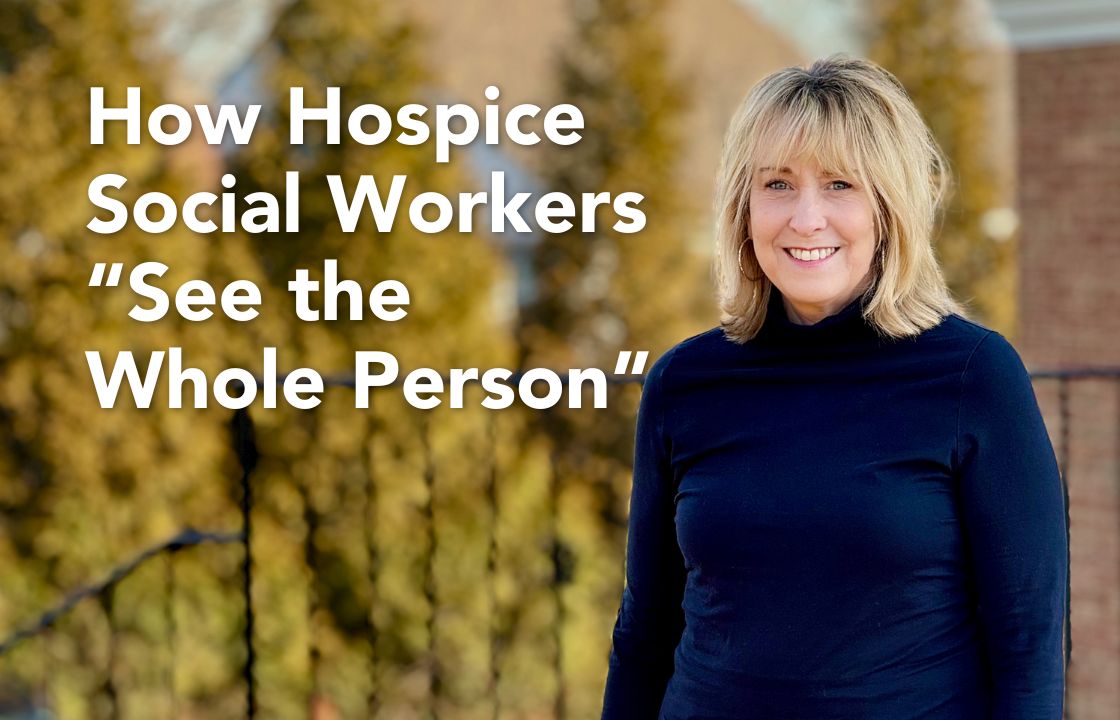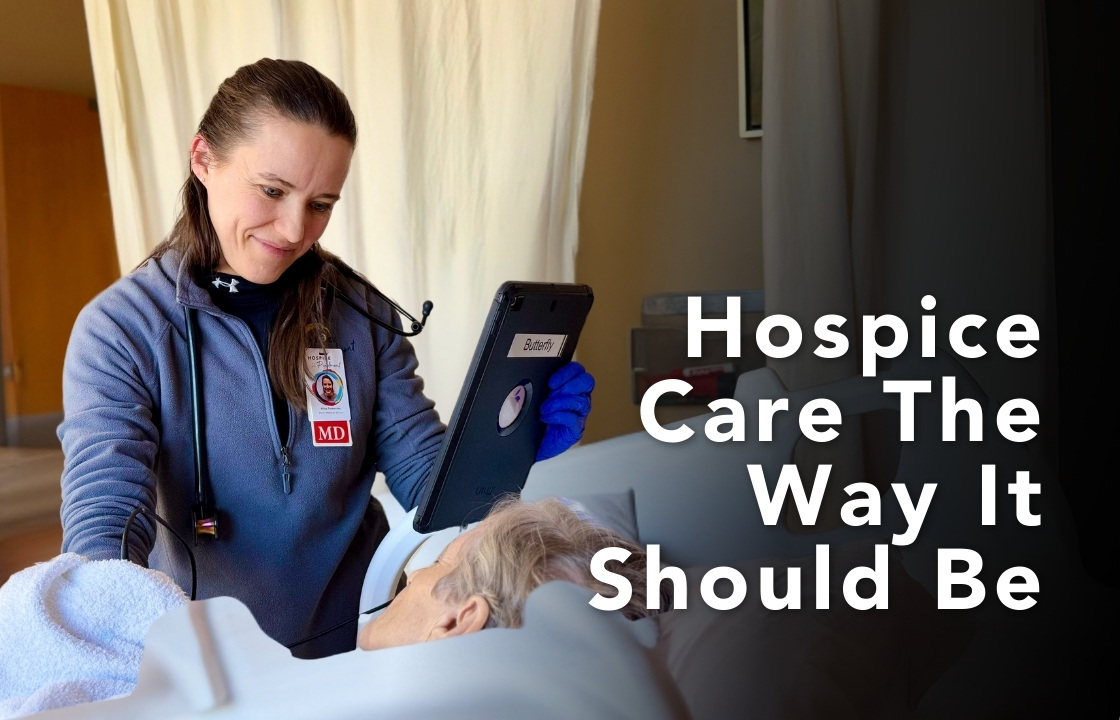The first time Gloria met Kitty Misty, something changed.
The 88-year-old Hospice of the Piedmont (HOP) patient had been struggling with progressive supranuclear ophthalmoplegia and Alzheimer’s, conditions that made her fidget constantly—picking at her clothes, rubbing her eyes, wiping the table over and over.
But when HOP Nurse Katie Hughes introduced her to a robotic cat, Gloria’s focus shifted.
“She immediately started petting it,” Katie recalled. “She was trying to feed it her food, interacting and talking to it. She was very concerned about making sure it was taken care of.”
Gloria took to the cat so quickly that she decided to give it a name: Kitty Misty. For Gloria, Kitty Misty was just what she needed. The soft purring, the way the cat responded to touch, and even the gentle meows all seemed real to her.
“She definitely talks to it,” Katie said. “When it responds, she’ll say, ‘Oh, is that right? Is that what you think?’ It’s like she believes it’s talking back to her.”
Gloria’s daughter saw an immediate change, too. Gloria’s bond with Kitty Misty redirected her energy, replacing fidgeting with nurturing behaviors. Now, she sends Katie videos of Gloria and Kitty Misty.
“She loves it,” Katie said. “It’s gone over very well.”
Gloria’s story is one of many at Hospice of the Piedmont, where a growing number of patients are discovering that comfort sometimes comes with a wagging tail or a gentle purr.
When Her Father Wasn’t Himself
For Abby Denby, Chief Clinical Officer at Hospice of the Piedmont (HOP), the power of robotic companion pets is deeply personal.

Chief Clinical Officer
Years before she championed the program at HOP, Abby faced an impossible situation: her own father, hospitalized with vascular dementia and Alzheimer’s, was becoming unrecognizable.
“He was not himself,” she recalls. “He was hitting people. He was cursing at people. He was really aggressive and agitated. And I realized he can’t stay like this.”
Abby and her family’s search for a solution began with an unconventional idea—her mother’s lap dog. She knew her father had always loved animals, and sure enough, when the dog arrived, the transformation was almost immediate. “When I walked back into the room, my dad was kissing the dog and loving on the dog,” she remembers.
She knew her dad’s nursing team had ordered him a dose of Haldol, an antipsychotic medication sometimes used in dementia patients with behavior problems.
“I vividly remember saying, ‘Gosh, that Haldol worked fast.’ Then the nurse came in with the medication, and I realized she hadn’t given him the medication yet.” Abby laughs, recalling how the lap dog was more effective than the sedative.
Her father was simply happy, calm—himself again.
That moment sparked an idea: What if the comfort of a pet could be replicated in a more sustainable way?
The Idea Takes Shape
It was around that time that a friend shared a 2016 New York Times article about robotic companion pets. Abby was willing to try anything. She ordered him one of the lifelike robotic companion pets.
It worked. “He was just a different person with it,” she recalls.
What’s more, it transformed the relationship with the hospital staff. Suddenly, they could care for him. Nurses would stop by just to visit and play with her dad and his “dog.”

After her father passed away in 2017, she pursued her Doctor of Nursing Practice. Her doctoral research confirmed what she had already seen firsthand—these pets didn’t just provide comfort. They reduced agitation, decreased the need for antipsychotic medications, and helped caregivers feel less helpless.
“In hospice, we talk about living out your journey,” Abby explains, “for many people, animals have been a meaningful part of that journey.”
The Broader Benefits
A recent New York Times article projected that dementia cases in the U.S. will surge in the coming decades, underscoring the urgent need for innovative, non-pharmacological solutions. Robotic companion pets are one such solution, offering an array of clinical and emotional benefits:
- Reducing Agitation and Anxiety: Robotic pets help redirect patients’ focus to something comforting and familiar, easing the stress that often accompanies neurocognitive disorders.
- Combatting Loneliness: Robotic pets provide constant companionship for patients who live alone or are socially isolated, filling an emotional void.
- Supporting Caregivers: Abby’s research showed that caregivers feel less helpless and more hopeful when a robotic pet helps calm a patient, making tasks like administering medication or providing daily care easier.
The U.S. Department of Veterans Affairs has also begun implementing robotic pet therapy programs to provide companionship to isolated older veterans. These companion pets have brought comfort, a means of engagement, and a sense of purpose for veterans who might otherwise feel isolated or lonely.
From a hospice perspective, Abby emphasized the importance of starting hospice care early so care teams can better understand patients’ unique preferences and needs.
“It’s about what has brought them comfort throughout their life. Knowing if someone is a cat person, a dog person, or a ‘no animal person’ helps us personalize care,” she said. This customization is, of course, a hallmark of hospice care.

Lifelike, Responsive, and Unbelievably Real
When people first see a robotic companion pet, their reaction is almost universal—surprise.
“They’re so realistic,” Katie said. “You just automatically start petting them. They feel like real animals.”
The pets respond to touch by moving their heads, blinking, and wagging their tails. They meow. They bark. Their lifelike behavior makes it easy for patients to form a connection, much like they would with a living pet.
But unlike real animals, these pets don’t require care. There’s no litter box to clean, no feeding schedule to maintain, and no need for daily walks. This makes them ideally suited for hospice patients, who may no longer be able to take responsibility for a real cat or dog. Instead, they can simply enjoy the presence of a beloved pet—without any of the burdens.
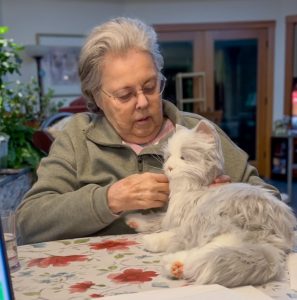
For someone like Gloria, whose neurocognitive disorder causes her to fixate on small movements, the rhythmic rise and fall of Kitty Misty’s breathing provides a sense of calm and familiarity.
“She spends more time with the cat and focuses on that instead of constantly fidgeting,” Katie said. “It’s a complete shift.”
That redirection is key. As Abby explains, “When we think about patients with dementia or Alzheimer’s, we think: how can we redirect them? If they’re focused on things causing stress, anxiety, frustration, or agitation. What redirects them to something more comforting?”
Looking Ahead: Generosity and Acceptance
Thanks to a generous grant from the Perry Foundation, Inc., Hospice of the Piedmont is piloting this program as part of our commitment to personalized care. The grant has provided funding for the first 100 robotic companion pets, with the goal of expanding to 250+ so that every patient who would benefit can receive one.
“This is a wonderful opportunity for people like Gloria who really need the extra security, support, and therapy that they normally can’t get from pets,” Katie says.
Abby hopes the program will encourage broader acceptance of robotic pets as legitimate care tools. “Some people are hesitant at first,” she acknowledged. “It’s hard to explain that this isn’t just a toy—it’s a way to bring comfort and connection.”
Indeed, Hospice of the Piedmont gives families the option to keep them as a comforting memento after their loved one passes. Alternatively, If the patient is in a facility, the pet is offered to the facility to continue comforting others.
Closing Reflection
For Abby, the Robotic Companion Pet program is a deeply personal way to honor her father’s memory. It’s also a testament to a core hospice philosophy: seeing patients as whole people, not just their diagnoses.
“This service is about your whole life and your whole being, not just your disease,” Abby reflects. “It’s about comfort versus agitation. Companionship versus loneliness or depression. Having purpose. Seeing someone as a whole person.”
At Hospice of the Piedmont, programs like this redefine what care can look like, offering patients and families moments of joy, connection, and dignity during life’s final chapters.
You Can Help
Thanks to the generosity of our community, dozens of hospice patients like Gloria have already found companionship in a robotic pet. But the need continues to grow.
Your gift can provide more of these pets to hospice patients who would benefit—veterans facing isolation, individuals with dementia, and those who simply find joy in a furry friend.
To support this program, visit our online giving page and select “Companion Pet Program” or contact our Development Team.
